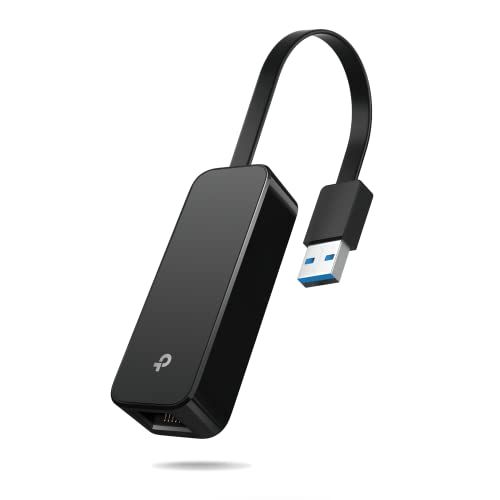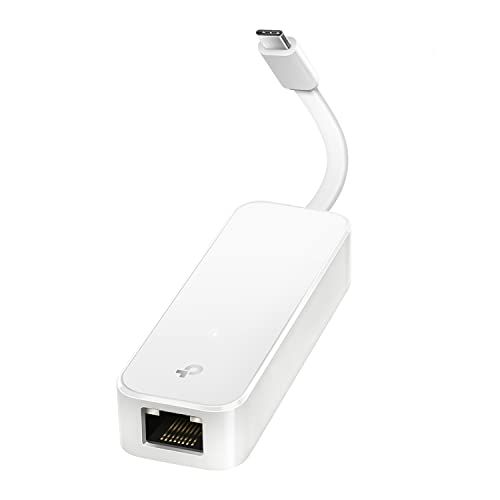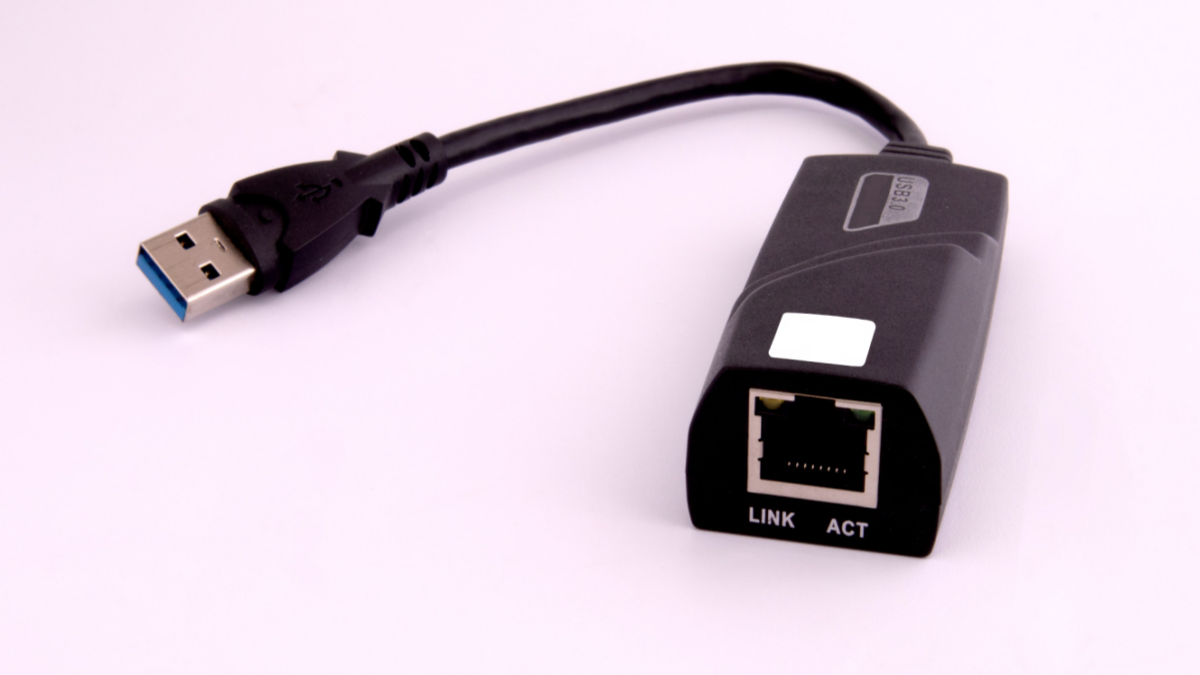Once upon a time, when laptops were a far bulkier affair, Ethernet ports were standard. Ever more slender laptop designs eschew the Ethernet port these days, but that doesn't mean you have to go without --- here's how you can get one on any modern laptop.
Ethernet Over USB
Most modern laptops don't come with dedicated Ethernet ports anymore --- they're simply too bulky to fit into the slim devices we've grown accustomed to. They primarily rely on modern Wi-Fi networks for their connectivity. However, there are plenty of reasons to want a wired connection. Most notably, wired connections tend to be more stable, and they're usually faster. Luckily, there are a huge number of adapters available that let you connect an Ethernet cable to a USB port.
There are a few basic considerations to keep in mind while picking a USB to Ethernet adapter. USB 2.0 adapters have a lower maximum throughput than adapters that use USB 3.2 Gen 1 or USB 3.2 Gen 2, but it probably won't matter for most uses. USB 2.0 has a maximum transfer rate of 480 megabits (60 megabytes) per second --- that is plenty for most day-to-day applications.
However, USB 3.2 Gen 1 supports gigabit speeds at the same price point. Unless you have a niche application that requires you to use USB 2.0, you should just get a USB 3.2 Gen 1 adapter.
A large number of the USB to Ethernet adapters you'll find online or in brick-and-mortar stores are still labeled with "USB 3.0" even though the name has formally changed to USB 3.2 Gen 1. Don't worry about it.
You can buy Thunderbolt to Ethernet adapters, but you shouldn't unless you're buying a docking station. The bandwidth available through Thunderbolt 3 or 4 vastly exceeds the bandwidth available over most Ethernet cables, and they're expensive compared to their USB counterparts.
USB-A Adapters
A basic USB-A to Ethernet adapter is probably what you need if you are looking for a no-frills way to get your laptop connected via Ethernet cable. They're small, inexpensive, and readily available. As of May 2022, most laptops still have one or two USB-A ports on them, and they'll likely be included on most Windows and Linux laptops for the foreseeable future.
If you're using an Apple laptop, like a MacBook Pro or a MacBook Air, you'll probably need to grab a USB-C Ethernet Adapter --- Apple hasn't included USB-A ports on its laptops since 2015.
This adapter from TP-Link uses USB 3.1, and is fast enough to support a gigabit Internet connection if you have one. It should be plug'n play on most modern operating systems.

TP-Link USB to Ethernet Adapter
TP-Link's UE306 USB to Ethernet adapter supports gigabit connection speeds, and is plug'n play with almost any modern operating system.
USB-C Adapters
USB-C to Ethernet adapters are mostly the same as any of the USB-A adapters, with only a few differences. USB-C is a newer standard, so you probably won't find a USB 2.0 to Ethernet adapter with a USB-C plug on it. Additionally, USB-C to Ethernet adapters can be plugged into any Thunderbolt port your laptop might have, whereas USB-A connectors cannot.
USB-C is also the standard for all modern Android cellphones. You might (depending on your cellphone) be able to use a USB-C to Ethernet adapter to tether your entire home network through your phone by plugging it into your router. It probably won't work well, but it could help in a pinch.
This USB-C to Ethernet adapter manufactured by TP-Link is in the same series as the USB-A adapter we recommended. It is also a USB 3.1 device and supports gigabit connection speeds.

TP-Link USB C To Ethernet Adapter
This USB-C to Ethernet adapter from TP-Link is suitable for all modern laptops equipped with USB-C ports. It supports gigabit connection speeds, and is compatible with Thunderbolt 3 and 4.
Docking Stations with Ethernet Ports
Docking Stations (docks) are the most fully-featured option available if you want to add an Ethernet port to your laptop. Most docks connect using USB-C and have connections for video, audio, Ethernet, and additional USB ports. Since docks support so many devices besides just Ethernet, it is worth getting the fastest one you can --- either Thunderbolt 4 or USB 3.2 2x2.
Some manufacturers --- like Microsoft --- have specialized docks for their laptops. They tend to command a premium price point. If you plan on using your laptop in the same location most of the time, and you need a greater diversity of ports, a dock is worth considering. Otherwise, stick to the USB to Ethernet adapters --- you'll save yourself a ton of money.
What If It Doesn't Work After Plugging It In?
Most USB adapters these days are plug and play --- they should just work out of the box with no fussing. However, sometimes things don't work quite right. If your laptop isn't connecting using the adapter, try downloading the manufacturer's drivers.
If you're using either of the ones we recommended, TP-Link has a handy site where you just plug in the model number and it'll provide you with the correct drivers.
That's all there is to it really; we live in the golden age of plug 'n play compatibility and it's never been easier to just slap a USB addition (even a network connection as we've just seen) onto your laptop.

